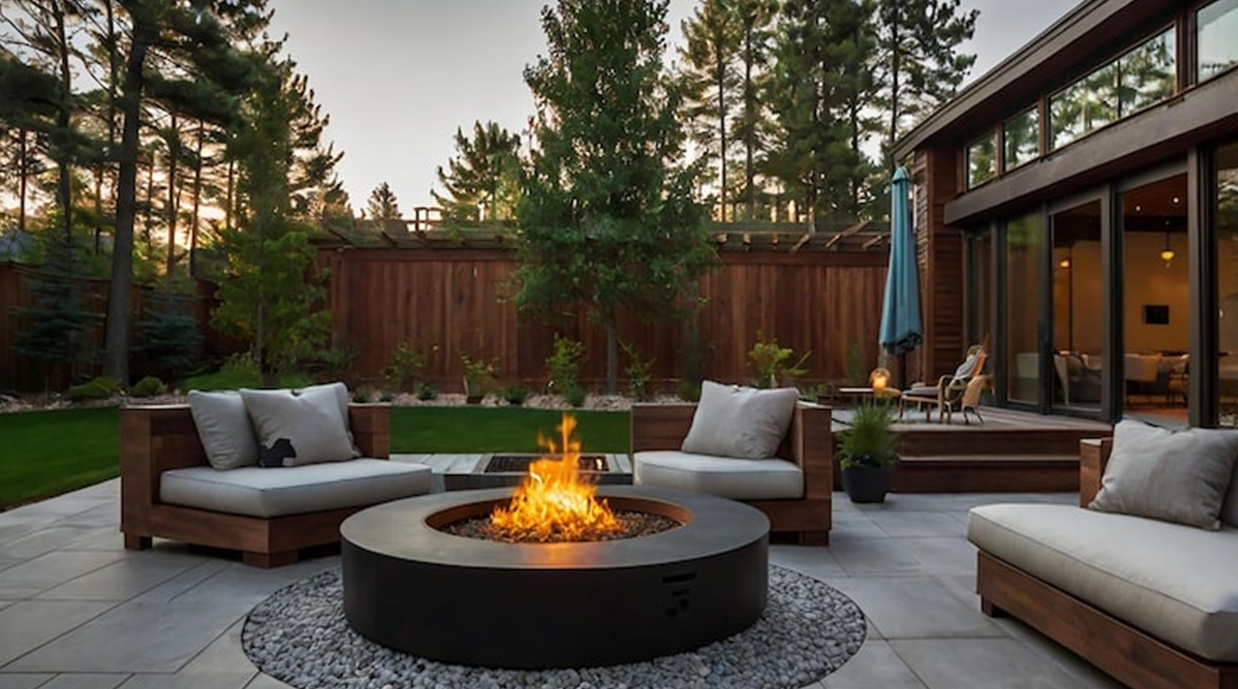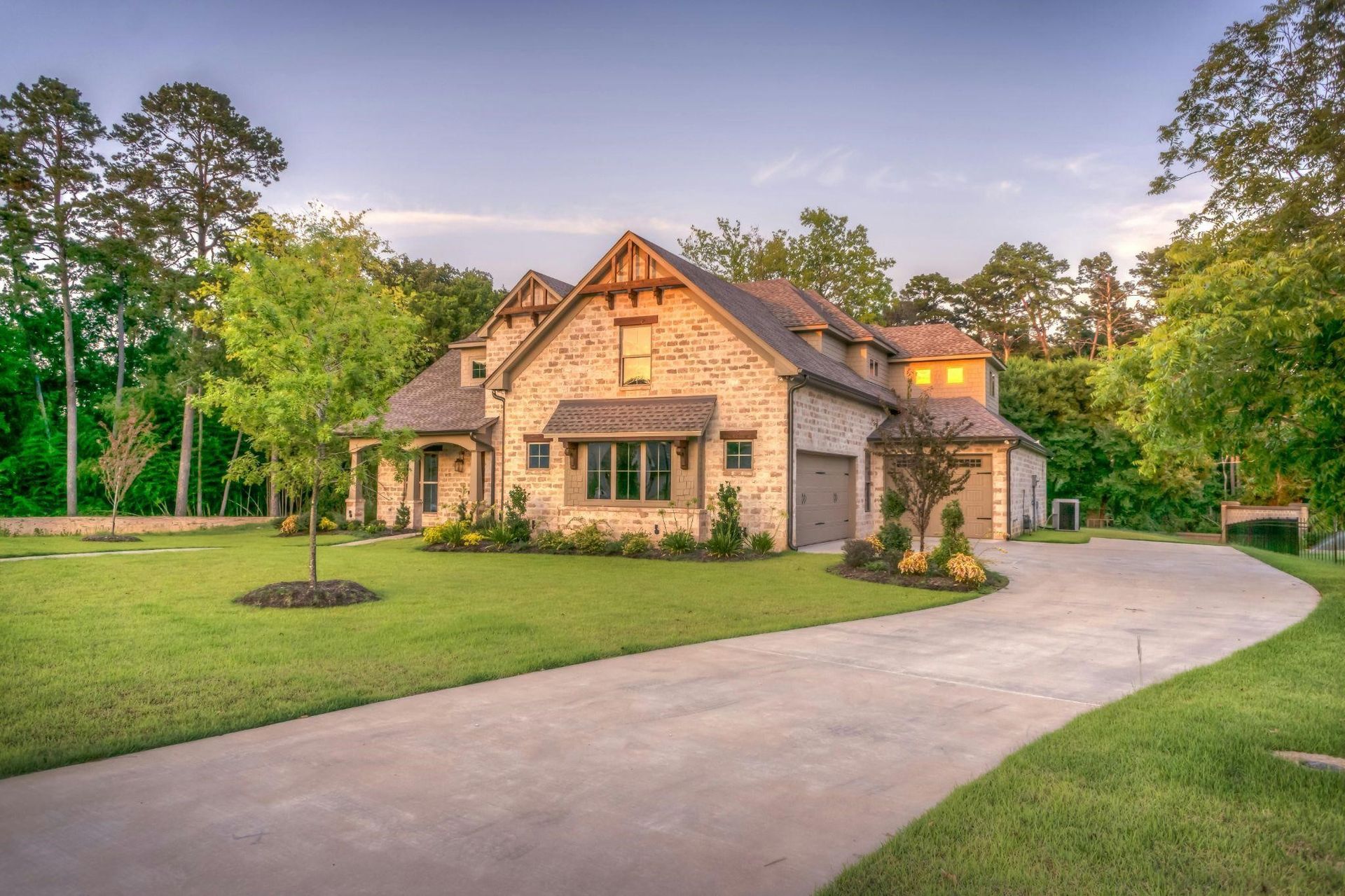
When you think about relaxing outdoors, your mind might wander to sunny summer days, backyard barbecues, and laughter around a crackling fire. But what if you could enjoy your outdoor space all year long, no matter the season? That’s exactly what outdoor living redefined is about—transforming your backyard into a cozy, functional retreat that suits every type of weather. Whether it’s a warm July evening or a crisp November morning, you can still enjoy the comfort of your outdoor oasis.
What Does “Outdoor Living Redefined” Really Mean?
Outdoor living redefined means going beyond basic patio furniture or a seasonal setup. It’s about creating a backyard that functions as an extension of your home. You’re not just adding a few chairs; you’re designing an outdoor environment that feels just as inviting as your living room.
This new approach blends comfort, functionality, and style. It’s about using materials and design elements that stand up to the weather while still looking beautiful. More people today are turning their backyards into all-season spaces, complete with heating, lighting, and shelter options that make outdoor living possible every month of the year.
When done right, your backyard can become your favorite part of your home—somewhere you can unwind, entertain, and even work from.
How to Plan Your Year-Round Outdoor Living Space
Planning a space that works year-round starts with understanding your needs and climate. Do you want to entertain guests, relax alone, or both? Is your area known for heavy rain or snow? Think about how you’ll use the space before you start decorating.
A few key things to consider:
●
Functionality – Make sure every zone in your outdoor space has a purpose. A lounging area, dining space, and a cooking section each serve a role.
●
Comfort – Invest in weather-resistant furniture with cozy cushions that can be stored or covered during bad weather.
●
Durability – Use materials like stone, concrete, and treated wood. They last longer and look great through every season.
Planning thoughtfully will help your backyard become a functional and beautiful extension of your home.
Comfort in Every Season: Heating and Cooling Solutions
To enjoy your backyard year-round, temperature control is essential. It’s what makes outdoor living redefined truly possible.
In colder months, add outdoor heaters or fire pits. They not only provide warmth but also create a welcoming ambiance. A built-in fireplace or gas heater can keep guests comfortable even on chilly evenings.
For summer, shade is your best friend. Install pergolas, umbrellas, or retractable awnings to block the sun while still letting in fresh air. Ceiling fans or misting systems can keep things cool on the hottest days.
A comfortable temperature makes all the difference between a space you occasionally use and one you love daily.
Shelter and Shade: Creating an All-Weather Zone
A backyard retreat needs protection from the elements. Rain, wind, and sunlight can all affect your comfort. Adding covered areas helps make your outdoor space usable in any season.
Pergolas and gazebos work beautifully to define spaces while offering shade. If you prefer something more flexible, consider retractable canopies or outdoor curtains. These options let you control how much light or privacy you want.
For a complete all-weather setup, many homeowners add enclosed patios or glass walls that can open in summer and close during cooler months. This helps blend the indoor and outdoor experience seamlessly.
Lighting That Extends the Day
Outdoor lighting is one of the easiest ways to make your backyard feel inviting year-round. It sets the mood, enhances safety, and allows you to enjoy your space after sunset.
String lights and lanterns create a cozy atmosphere for evening gatherings. Pathway lights keep walkways safe, while wall-mounted fixtures highlight architectural features. You can even use solar-powered lights to cut down on energy use.
A smart lighting setup transforms your backyard from a daytime retreat to a nighttime escape. The right balance of brightness and warmth will make it feel magical in every season.
Outdoor Kitchens and Dining Spaces
Nothing says outdoor living is redefined like a backyard kitchen or dining area. It turns your space into a true entertaining hub. Imagine cooking under the stars or enjoying a weekend breakfast surrounded by nature.
You don’t need a massive setup to make it functional. Start with a sturdy grill, a small countertop, and a dining table that seats your family comfortably. Over time, you can expand with a sink, storage, and even a mini fridge.
Adding weather-resistant materials ensures everything lasts. Stainless steel and stone are both great choices because they handle outdoor conditions well and are easy to maintain.
Backyard Seating Ideas for Every Mood
The right seating can make or break your backyard experience. Whether you want to lounge with a book, chat with friends, or nap in the sun, your furniture should match your lifestyle.
Try a mix of seating types. Sofas, loungers, and dining chairs can create layers of comfort. Hammocks or hanging chairs add a fun touch while encouraging relaxation.
Arrange seating in small clusters for conversation or around a fire pit for cozy evenings. The goal is to make the space feel natural and welcoming, no matter the season.
Adding Greenery and Natural Elements
Plants bring color, life, and freshness to any outdoor retreat. They make the space feel peaceful and vibrant at once. You can mix flowers, shrubs, and small trees to create visual interest.
Evergreens are a great option because they stay lush year-round. Adding potted plants lets you change the look seasonally. In colder months, move them closer to the house or into a covered area.
Water features like fountains or small ponds add a soothing element. The sound of flowing water can make your space feel more relaxing and inviting.
Entertainment Options for Year-Round Enjoyment
Your outdoor living redefined setup can also include entertainment. Think about how you’ll use the space for fun and connection.
Install an outdoor sound system to enjoy music or podcasts while relaxing. A weatherproof TV can make movie nights unforgettable. Games like cornhole or bocce ball add energy to gatherings.
Even during winter, cozy up with blankets and watch your favorite shows under the stars. Having entertainment ready for every season keeps your backyard feeling alive and useful all year.
Maintenance Tips to Keep Your Space Fresh
A beautiful backyard requires some care. Regular maintenance ensures your outdoor retreat stays functional and inviting.
● Clean surfaces often to prevent mold or dirt buildup.
● Protect furniture with covers during harsh weather.
● Check lighting and heating equipment for safety.
● Trim plants regularly to keep everything neat and healthy.
Interestingly, maintaining indoor systems can also enhance your outdoor comfort. For instance, air duct cleaning inside your home helps improve airflow, making it easier to manage both indoor and outdoor temperatures efficiently.
Keeping everything in good condition helps your backyard stay ready for any occasion.
Answering a Common Question: How Can You Enjoy Outdoor Living in Winter?
Many homeowners wonder if outdoor living redefined can truly work during winter. The answer is yes, with the right setup.
Add heat sources like fire pits or patio heaters. Layer your furniture with thick cushions and warm throws. Enclose certain areas with screens or glass panels to block the wind.
You can even use warm lighting and outdoor rugs to make the space cozy. When designed thoughtfully, your backyard can stay enjoyable even in the coldest months.
Sustainable and Smart Upgrades for Modern Outdoor Spaces
Sustainability plays a growing role in how people approach outdoor living today. Choosing eco-friendly materials and energy-efficient systems can make your backyard greener in every sense.
Solar lights, rainwater collection systems, and native plants help reduce your environmental footprint. You can also use recycled or reclaimed materials for decking and furniture.
Smart home technology can enhance convenience too. Automated lighting, sound systems, and temperature controls allow you to manage everything easily from your phone. This balance between sustainability and technology is what makes modern outdoor living truly redefined.
Personal Touches That Make It Yours
Your backyard retreat should reflect your personality. Add items that make you happy. It could be a collection of outdoor art, cozy textiles, or custom-built furniture.
Even small details like decorative pillows, planters, or rugs can transform the atmosphere. A few thoughtful choices can make your backyard feel uniquely yours.
Whether it’s a cozy reading nook or a lively gathering space, make it fit your lifestyle. That’s what gives outdoor living redefined its charm.
Creating Flow Between Indoor and Outdoor Spaces
A seamless transition between indoor and outdoor spaces helps both areas feel larger and more connected. Wide glass doors, matching flooring, or consistent color schemes can achieve that flow.
Your Backyard, Your Everyday Escape
Outdoor living redefined isn’t just about aesthetics. It’s about creating balance, comfort, and connection with nature. Whether you’re enjoying a quiet morning coffee or hosting friends by the fire, your backyard becomes a place to live fully all year.
With the right mix of design, functionality, and maintenance, you can turn your outdoor area into an everyday escape. From cozy winter evenings to breezy summer nights, every season becomes a reason to step outside and enjoy your own piece of paradise.
Conclusion: Redefining Outdoor Living for Every Season
Outdoor living redefined is about transforming your backyard into a welcoming retreat that works year-round. It’s not just about adding furniture or décor; it’s about designing an outdoor environment that feels like a natural extension of your home.
By focusing on comfort, weather protection, lighting, and sustainability, you create a space that adapts with the seasons. You can enjoy warm gatherings in winter, peaceful mornings in spring, vibrant barbecues in summer, and cozy evenings in autumn—all without ever feeling limited by the weather.
When planned thoughtfully and maintained well, your backyard becomes more than a seasonal escape. It turns into a personal sanctuary where you can relax, connect, and recharge all year long. That’s the true meaning of outdoor living redefined.
When both areas complement each other, you’ll naturally spend more time outside. Add outdoor lighting that matches your indoor style for harmony. It’s a subtle touch, but it makes a big difference in creating a cohesive experience.






